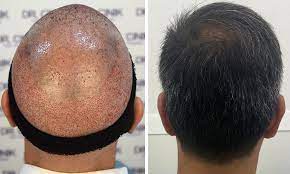Orthopedic allografts have emerged as indispensable tools in the field of orthopedic medicine, offering innovative solutions for a range of musculoskeletal issues. Ashlee Morgan explores the crucial role and multifaceted functions of orthopedic allografts, shedding light on their transformative impact on various medical treatments.
1. A Diverse Toolbox of Grafts
Orthopedic allografts encompass a diverse range of tissues, including bones, tendons, ligaments, and cartilage, harvested from carefully screened donors. This extensive toolbox allows healthcare professionals to tailor treatments to the specific needs of patients, addressing a myriad of orthopedic conditions with precision.
2. Bone Grafts: Bridging Gaps and Promoting Fusion
Bone defects resulting from trauma, tumors, or complex fractures often require interventions to stimulate healing and restore structural integrity. Allograft bone, sourced from donors, plays a pivotal role in bone grafting procedures. It acts as a scaffold, facilitating the patient’s natural bone regeneration process and promoting fusion across damaged areas.
3. Tendon and Ligament Reconstructions
Orthopedic allografts find extensive application in tendon and ligament reconstructions, particularly in cases of sports-related injuries. The Achilles tendon, patellar tendon, and other allograft tissues serve as effective substitutes for damaged or torn tendons and ligaments. This not only streamlines the surgical process by eliminating the need for harvesting tissues from the patient but also accelerates the rehabilitation timeline.
4. Cartilage Repair and Restoration
The delicate nature of cartilage and its limited regenerative capacity make injuries to this tissue particularly challenging. Orthopedic allografts, such as osteochondral grafts, offer a viable solution for cartilage repair. These grafts, sourced from healthy donors, provide a template for the reconstruction of damaged cartilage, aiding in the restoration of joint function and mitigating the impact of conditions like osteoarthritis.
5. Minimizing Patient Morbidity
One of the key advantages of orthopedic allografts is their ability to minimize patient morbidity. Unlike autografts, where tissues are harvested from the patient’s own body, allografts eliminate the need for secondary surgeries. This not only reduces the risk of complications at the donor site but also contributes to a more efficient and less invasive treatment experience for patients Ashlee Morgan.
6. Enhancing Surgical Precision
The availability of a variety of orthopedic allografts enables surgeons to choose grafts that closely match the anatomical requirements of each patient. This high level of customization enhances surgical precision, optimizing the fit and function of the graft and ultimately contributing to improved patient outcomes.
In conclusion, orthopedic allografts have become integral to modern medical treatments, offering versatile solutions for a spectrum of orthopedic challenges. Their role in bone grafting, tendon and ligament reconstructions, and cartilage repair showcases the breadth of their impact. As advancements continue to unfold, orthopedic allografts will likely remain at the forefront of innovative approaches in orthopedic medicine, empowering healthcare professionals to provide tailored and effective treatments for their patients Ashlee Morgan.



